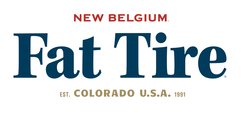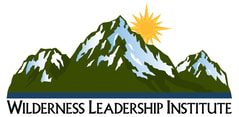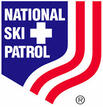Snowpack Summary January 31, 2024
Posted by Allen Giernet @ 7:30 am (this summary expires when we get substantial )
This summary applies to backcountry areas only.
The Bottom Line –
Early season snowpack conditions still exists!!!
Unfortunately we have had a very slow start to our season and measurable snowpack is nil except the highest elevations. Due to this we have very little no data from our backcountry areas. Treat the areas as low tide to no tide conditions. With the approaching system forecast to begin this evening we will hopefully see a base begin to develop. Forecasts are calling for over 12" of precipitation above 8,000' through the next couple of days, with another system forecast to follow on its heals. Snow line may get as low as 6,000' but will remain near 7,000' for the bulk of the precip. We will need substantially more snow to begin filling in areas to open up riding except at the highest elevations. Low tide and obstacles will be the biggest concerns. if there is enough snow to ride there is enough snow to slide and getting swept off your feet in these conditions can have significant to fatal consequences. Use prudent judgement and be aware what is below you that you could be carried into. Have the experience and skill to evaluate avalanche danger and match your terrain and travel choices to conditions and your skill level.
If you are out there please share your observations with us at the avalanche center Submit Reports page.
Forecasts will begin regularly as we gain snow.
Posted by Allen Giernet @ 7:30 am (this summary expires when we get substantial )
This summary applies to backcountry areas only.
The Bottom Line –
Early season snowpack conditions still exists!!!
Unfortunately we have had a very slow start to our season and measurable snowpack is nil except the highest elevations. Due to this we have very little no data from our backcountry areas. Treat the areas as low tide to no tide conditions. With the approaching system forecast to begin this evening we will hopefully see a base begin to develop. Forecasts are calling for over 12" of precipitation above 8,000' through the next couple of days, with another system forecast to follow on its heals. Snow line may get as low as 6,000' but will remain near 7,000' for the bulk of the precip. We will need substantially more snow to begin filling in areas to open up riding except at the highest elevations. Low tide and obstacles will be the biggest concerns. if there is enough snow to ride there is enough snow to slide and getting swept off your feet in these conditions can have significant to fatal consequences. Use prudent judgement and be aware what is below you that you could be carried into. Have the experience and skill to evaluate avalanche danger and match your terrain and travel choices to conditions and your skill level.
If you are out there please share your observations with us at the avalanche center Submit Reports page.
Forecasts will begin regularly as we gain snow.
General Concerns
Obstacles and low snow coverage will be the biggest hazard at this time. As snow fallows and accumulates small avalanches can sweep you off you feet and carry you into dire situations. Be aware of changing snow conditions and what is below you as you move through the mountains.
Some things to keep in mind while traveling in the mountains with changing weather conditions on a daily basis:
Wet Loose – This can happen in our climate very quickly following a storm cycle especially with the warmer systems we are seeing so far this season. Significant warming and little to no overnight freezes will increase the chance of Wet snow instability. Start early and finish early while avoiding solar affected slopes. Watch for signs of wet snow as you travel and the day warms. Starting on firm snow that gives way to sinking to boot top depth is a sign of wet snow instability. Look for roller balls and pinwheels emanating from rock outcroppings and move to lower angel terrain and less solar affected aspects if you see these signs. Wet Loose avalanches will not generally bury you but can knock you off your feet and carry you through or over nasty terrain features with cataclysmic results. Be aware what is below you and rapidly changing snow conditions.
Fast Firm conditions – are possible on all aspects especially at upper elevations following below freezing overnight temperatures. These conditions will pose the risk of slide for life scenario especially following a warmer period. This hazard is the most prominent cause for rescues in our local mountains especially areas such as the Baldy Bowl. A slip and fall can result in an uncontrollable slide with potential catastrophic results. Be sure to bring proper equipment (ice axe & crampons) with the skills to use them before committing to steep firm slopes. Be aware of snow surfaces you are traveling and changes as you move through different aspects and elevations as well as what is below you. Change terrain if these conditions develop before you find yourself in a situation you can’t retreat from.
Exercise caution if venturing out into the mountains and use avalanche protocols, travel with a partner and bring your beacon, shovel and probe.
Please share any information when you are out in the mountains. Even a photo is helpful. Submit observations to Submit Reports page.
Obstacles and low snow coverage will be the biggest hazard at this time. As snow fallows and accumulates small avalanches can sweep you off you feet and carry you into dire situations. Be aware of changing snow conditions and what is below you as you move through the mountains.
Some things to keep in mind while traveling in the mountains with changing weather conditions on a daily basis:
Wet Loose – This can happen in our climate very quickly following a storm cycle especially with the warmer systems we are seeing so far this season. Significant warming and little to no overnight freezes will increase the chance of Wet snow instability. Start early and finish early while avoiding solar affected slopes. Watch for signs of wet snow as you travel and the day warms. Starting on firm snow that gives way to sinking to boot top depth is a sign of wet snow instability. Look for roller balls and pinwheels emanating from rock outcroppings and move to lower angel terrain and less solar affected aspects if you see these signs. Wet Loose avalanches will not generally bury you but can knock you off your feet and carry you through or over nasty terrain features with cataclysmic results. Be aware what is below you and rapidly changing snow conditions.
Fast Firm conditions – are possible on all aspects especially at upper elevations following below freezing overnight temperatures. These conditions will pose the risk of slide for life scenario especially following a warmer period. This hazard is the most prominent cause for rescues in our local mountains especially areas such as the Baldy Bowl. A slip and fall can result in an uncontrollable slide with potential catastrophic results. Be sure to bring proper equipment (ice axe & crampons) with the skills to use them before committing to steep firm slopes. Be aware of snow surfaces you are traveling and changes as you move through different aspects and elevations as well as what is below you. Change terrain if these conditions develop before you find yourself in a situation you can’t retreat from.
Exercise caution if venturing out into the mountains and use avalanche protocols, travel with a partner and bring your beacon, shovel and probe.
Please share any information when you are out in the mountains. Even a photo is helpful. Submit observations to Submit Reports page.
General Mountain Weather Forecast |
Weather Page Link
Click on the links below for the latest information
Click here for this Season's Snow Pack Summaries
To better understand the challenges and potential variability over the large area we are producing information for please read our Snowpack Summary - Format and Limitations
Disclaimer:
This Bulletin is designed to generally describe conditions where local variations always occur. Travelers are advised to exercise caution and make slope specific evaluations. As always, please treat this bulletin with appropriately guarded skepticism and make your own assessments. Help to provide more information to the community by reporting your observations
This Bulletin is designed to generally describe conditions where local variations always occur. Travelers are advised to exercise caution and make slope specific evaluations. As always, please treat this bulletin with appropriately guarded skepticism and make your own assessments. Help to provide more information to the community by reporting your observations
Latest Observtions
Click on the observation to go to the full report
|
Observation type
Snowpack Location - Angeles Crest Date (yyyymmdd) -20230505 Comment May 5th, 2023.. Cinco De Mayo report on Angeles Crest.. NE aspect @ 8,000’ 15cm new snow Total snow depth. 195cm NE aspect @ 8500’ 20 cm new snow Total snow depth. 215cm N aspect @ 8800’ 35cm new snow Total snow depth. No bottom >280cm N aspect @ 9400’ 45-55cm new snow Total snow depth. No bottom >280cm Before 11-1200 snow was surprisingly light, dry but transitioning fast, and by 1400 it was rollerball and pinwheel city. Evidence of wet slides below 8k on east aspects affected by long hours in the sun. Temps were downright cold early, cool and mild mid day, but high May sun angle cooked the snow quick, and above 8k is now turned to hot pow and below 8k was lovely mank. |
Observation type -
Snowpack Location - Mt. Burnham - San Gabriels Date (yyyymmdd) - 20230423 Comment - April 22-23 2023 Long hauled 9 miles west of big pines for an overnight trip on the closed ACH. PCT hikers have just started to come through the area leaving somewhat of a worn path through still extremely deep avalanche run outs over the bench of ACH. The highway is still remarkably buried deep from BP to our destination 3 miles west of VG and beyond. Deepest is approx 25’+ under MB, which leads me to believe that we may not see ACH open until mid summer or not at all. The myriad of avalanche debris that are just now revealing themselves through the spring thaw is extensive and impressive. Above average temps and little to no refreeze below 9k yielded variable snow surfaces from hard fast firm to shin/knee penetration, even with ascension plates. Shallow glide cracks near and between steeper rock outcroppings were observed on some of the steeper north aspects approx 3-4’ deep. Wet loose instability was observed over the warm weekend will only small rider triggered slides no longer than the width of our boards on descent, and none of which ran further than 10-15’. There are still overhanging cornices that have yet to fail even under the late April sun angle and warm temps. Great corn to harvest when your descents are timed well. |
Observation type
Avalanche Location - Mt. Baldy Bowl Date (yyyymmdd) - 20230423 Comment - Wet loose debris noted toward skiers right of Baldy bowl. Another hiker told me he saw the avalanche happen around 6am. Fairly small and not destructive, but still something you wouldn’t want to be caught in. |
Observation type
Avalanche Location - Telegraph Peak Date (yyyymmdd) - 20230402 Comment - This wet slide occurred 4-11 afternoon @ 1:30 pm enroute to ski Telegraph peak. We had left the top of chair 3 and I was traversing towards The saddle of Telegraph peak when a significant crack occurred under my skis. I was able to maintain a traverse towards the trees and avoided getting caught! I thought it might be useful information if anyone is going to be skiing in the Telegraph peak area. |
General Caution
You should always use safe terrain management and carry avalanche rescue equipment in the backcountry. Most avalanches are triggered by someone in the party or the victim. Practice with your rescue gear often and be prepared should the worst happen. Though we do not have an avalanche forecast center in this area as of yet, the information posted and shared here as well as the resources available on this site will help to make informed decisions for your backcountry travels. Use avalanche forecasts in your travels wherever available and be aware that avalanche ratings are general information. Elevation, location, geographic variability’s, slope aspect and angle all have effects on the particular area you travel in. This is only one piece of the information you should use in your decision making process. There is no substitute for avalanche education, for more resources and information as well as education please refer to our resources page.
You should always use safe terrain management and carry avalanche rescue equipment in the backcountry. Most avalanches are triggered by someone in the party or the victim. Practice with your rescue gear often and be prepared should the worst happen. Though we do not have an avalanche forecast center in this area as of yet, the information posted and shared here as well as the resources available on this site will help to make informed decisions for your backcountry travels. Use avalanche forecasts in your travels wherever available and be aware that avalanche ratings are general information. Elevation, location, geographic variability’s, slope aspect and angle all have effects on the particular area you travel in. This is only one piece of the information you should use in your decision making process. There is no substitute for avalanche education, for more resources and information as well as education please refer to our resources page.






















